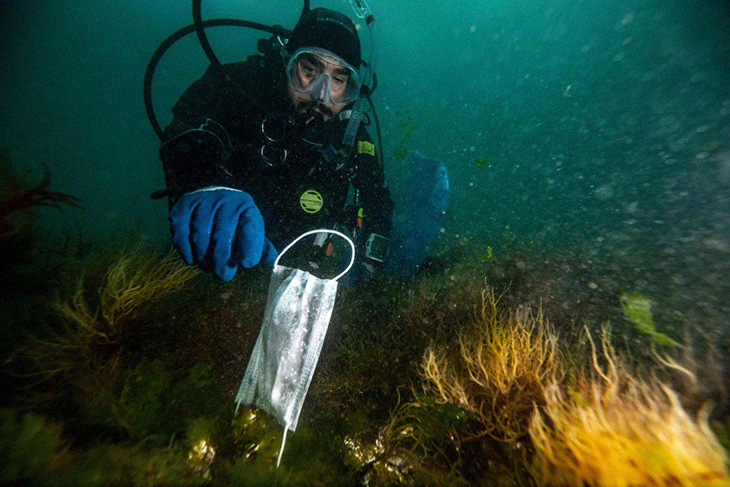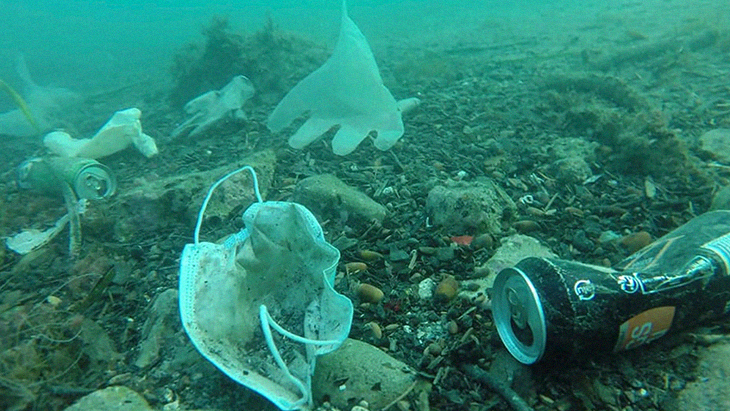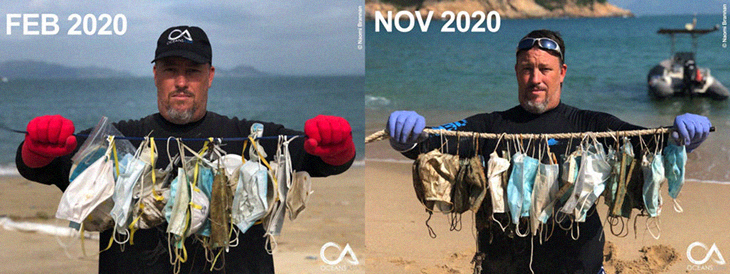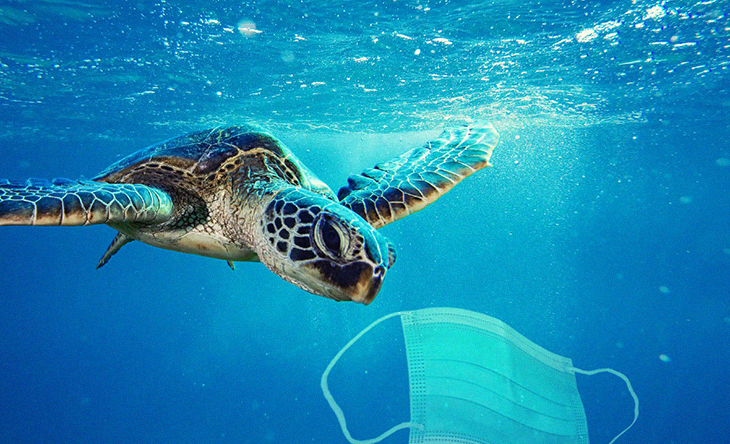
If there has been one common denominator that has affected the planet all across the globe in the year 2020, it’s coronavirus, it’s devastating effects on the human race, and the use of the controversial face masks in every country around the world.
While the pandemic has yet to be brought to a halt, the promise of an effective vaccine has been looming on the horizon for many, while already being put into effect in certain countries. Yet despite the promise of modern medicine, face masks are still currently considered one of the most useful preventive tools that people can use to keep them from getting infected with Covid-19.
But along with the need for billions of people to use face masks as a prime response to the ongoing global health crisis, the face mask has also become a point of contention when it comes to the environment. In fact, one study has even estimated that there has been no less than 129 billion face masks in use worldwide for every month since the start of the pandemic.
So what exactly does that mean? Despite the fact that these small face coverings have been a main tool to fight off the virus, they have also become one of the biggest issues when it comes to littering. Masks have been found to be littered everywhere, from every corner, storm drain, park, beach, trail, creek and crevice in every neighborhood. And they have added to the never-ending struggle of keeping trash out of the planet’s oceans, which has also undoubtedly made the water pollution issues even worse.
In a recent report from the NGO OceansAsia, a marine conservation group based in Hong Kong, it was shared that an estimated 1.56 billion face masks will find their way into the ocean this year alone. As a matter of fact, in Hong Kong, the island has already begun to see the devastating effects of this truth, having found loads of face masks washing up on their shores since the beginning of the pandemic.

According to OceansAsia director of research, Dr. Teale Phelps Bondaroff, “The fact that we are starting to find masks that are breaking up indicates that this is a real problem, that microplastics are being produced by masks.”
And why this poses a major threat to the environment is because these masks can take up to 450 years to break down, which means their potential to pollute the oceans could span actual centuries. These masks add yet another layer to the already horrific effects of the ongoing plastic pollution crisis in the Earth’s waters.
Although there are a number of reusable masks being sold all over the world, single-use masks – which contain multiple layers of polypropylene known to be basically thin fibers of plastic – are what most countries and health authorities recommend for individual’s personal protective equipment (PPE), especially in hospitals and other medical institutions.
And considering the fact that at least 52 billion single-use masks were manufactured this year alone, with each one weighing an average of 3 to 4 grams, that simply equates to anywhere between ‘4,680 to 6,240 metric tons of new marine plastic pollution’ in the year 2020.

According to the United Nations (UN), ocean pollution is already at a monstrous peak, with ‘an estimated 100 million tons of plastic’ already found within the ocean’s waters. And to make matters worse, 80 to 90 percent of that pollution actually originates from land-based sources.
Meanwhile, a 2016 report that was shared during the 2016 World Economic Forum in Davos, Switzerland estimates that by the year 2050, ‘plastic waste in the ocean will outweigh all fish.’ This will have monumental and devastating possibilities to the world and it’s environment if people don’t begin to reduce waste starting now.
Both conservationists and ocean biologists have expressed their growing and urgent concerns over this plastics and microplastics issue that has continued to grow and pollute our oceans, and worse, release carcinogenic toxins and chemicals into the world’s marine environments. In fact, a number of plastic drink containers are the cause of marine wildlife death, either by choking, trapping, or confining animals within the planet’s waters.
Dr. Bondaroff also said, “The question that we couldn’t answer was how many [masks] are entering our oceans? We just didn’t know.” But with this recent study done by OceansAsia, “The 1.56 billion face masks that have entered our oceans in 2020 are there for the long run. They will remain in the ocean for 450 years or more, and they’ll break into smaller pieces,” he adds.
Notably, the report also cites that the global sales of masks has grown in leaps and bounds, going from $800 million back in 2019 to a whopping $166 billion this 2020.
A huge reason for the exponential growth is due to certain health agencies like the Centers for Disease Control and Prevention (CDC) who have put out official health guidelines advising U.S. residents to wear face masks while in public ‘in lieu of or in addition to physical distancing measures meant to help prevent person-to-person transmission of the deadly disease.’
In addition, Dr. Bondaroff said, “That’s important, we need to keep people safe, but at the same time that has a lasting impact on our environment, and we’re seeing that on the beaches.” In this aspect, the report goes on to request that the public consider using reusable masks instead of disposable ones in order to lessen the overall consumption and waste of single use plastics. They also request that when using single-use face masks, that the public learn to dispose of them properly as well.
OceansAsia has also urged the authorities and health agencies to push for reusable masks rather than single-use ones. The NGO has also encouraged them to release guidelines on both the proper manufacturing and use of reusable masks, as well as educating people on responsible ways they can dispose of masks and other useful information and guidelines for the public’s use during the pandemic.

OceansAsia also shared, “The 1.56 billion face masks that will likely enter our oceans in 2020 are just the tip of the iceberg. The 4,680 to 6,240 metric tonnes of face masks are just a small fraction of the estimated 8 to 12 million metric tonnes of plastic that enter our oceans each year.”
Although It may sound like the littering of these face masks in the oceans is just a small part of the world’s single-use plastic pollution problem, if nothing is done, it will still become one of the Earth’s biggest threats to the environment, in more ways than one.
What are your thoughts? Please comment below and share this news!
True Activist / Report a typo


